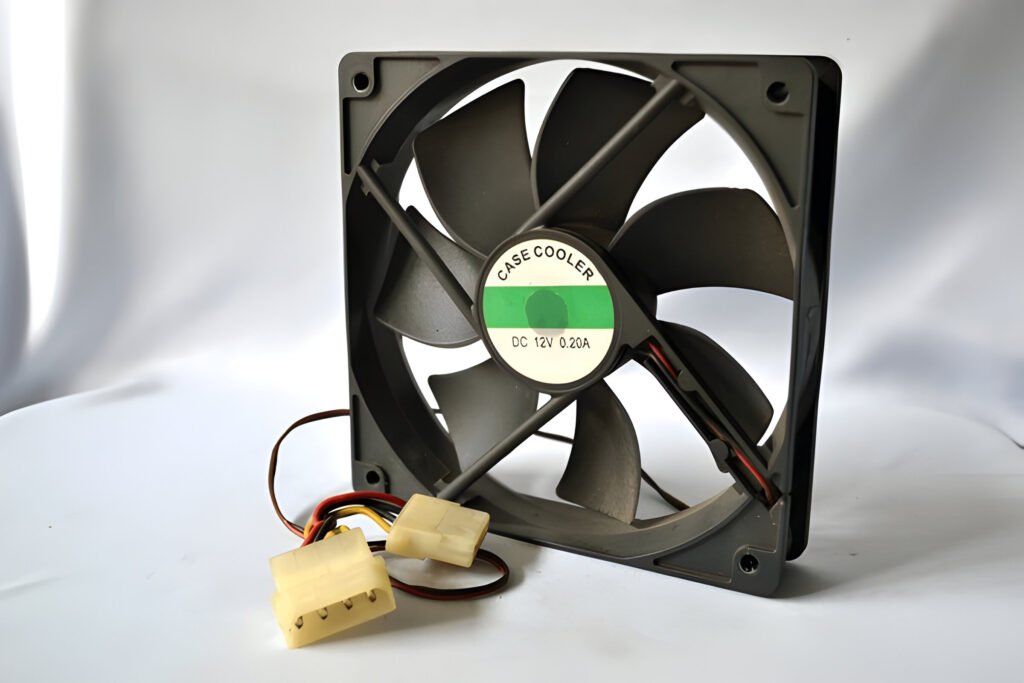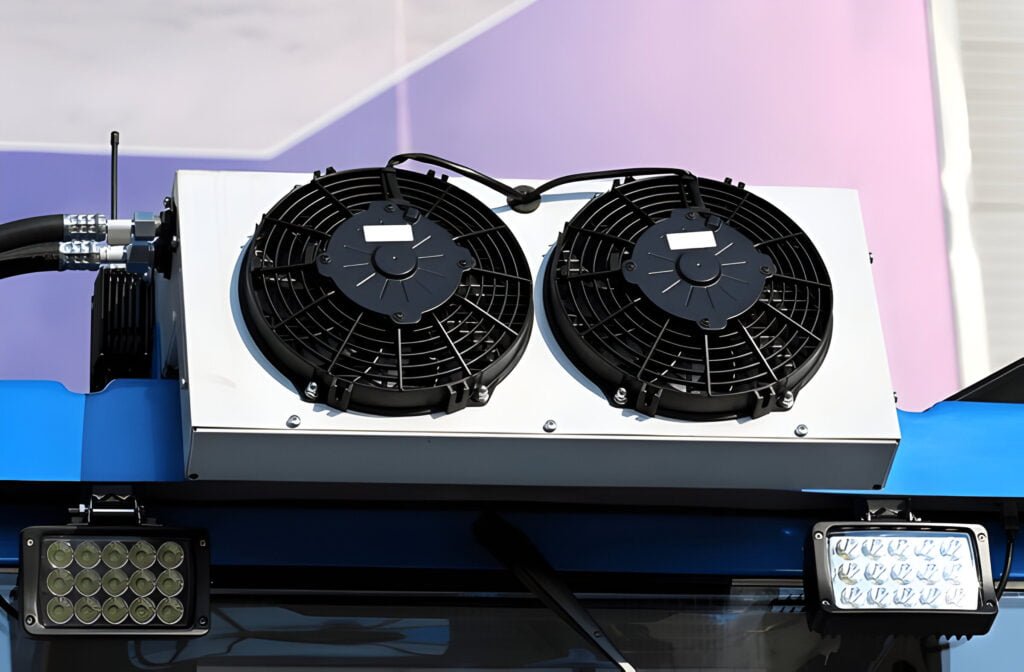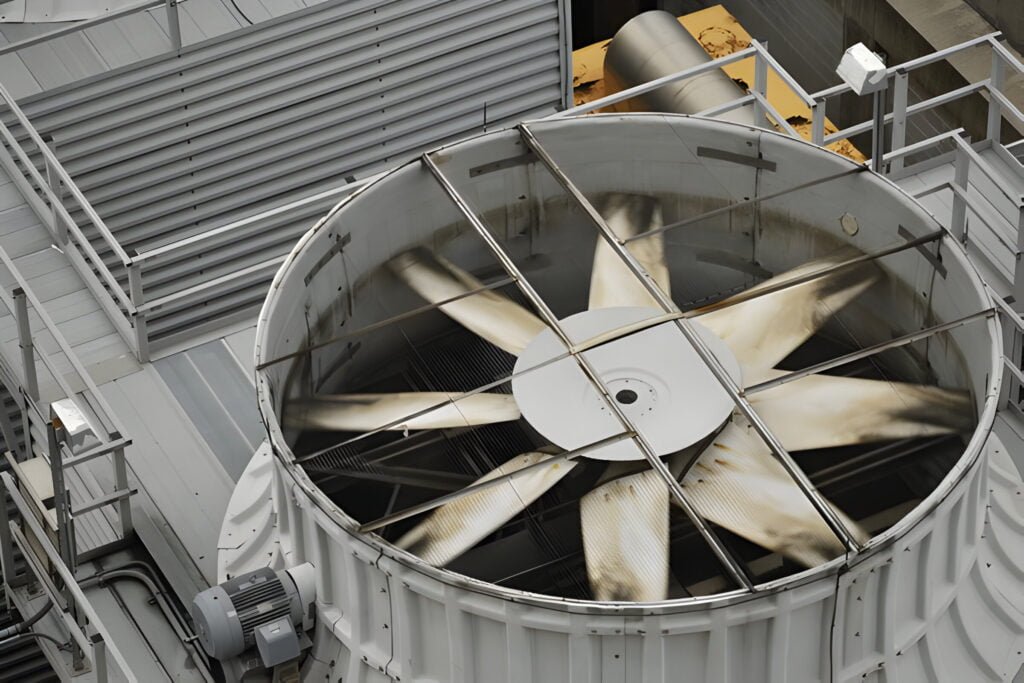What Are Axial Fans
Axial fans move air parallel to the fan blade axis. Used for general ventilation, cooling, and exhaust. Compact, efficient airflow in a straight line.
Read More
Axial fans in series or parallel configurations serve different purposes in air handling systems. Series arrangements increase static pressure while maintaining airflow, ideal for high-resistance systems. Parallel setups boost airflow capacity without changing pressure, suitable for low-resistance applications requiring high volumes.

Axial fans arranged in series operate sequentially along the same airflow path. Air passes through each fan successively, with one fan’s output becoming the next fan’s input. This configuration creates a chain of fans working together to increase overall pressure.
The main purpose of series-arranged axial fans is to boost total pressure capability. Each fan contributes to the cumulative pressure rise, achieving higher pressures than a single fan could produce. This setup overcomes substantial system resistance or maintains airflow in long ductwork.
While pressure increases with each fan in the series, airflow rate remains relatively constant. This arrangement benefits applications requiring high pressure, such as industrial ventilation systems, tunnel ventilation, and cooling towers.
Arranging axial fans in series increases static pressure while maintaining airflow. This configuration overcomes higher system resistances without reducing air volume. Each fan added in series cumulatively increases static pressure. Two identical fans with 1 inch of water gauge (in. wg) static pressure each will produce approximately 2 in. wg when connected in series. This additive effect continues with additional fans, though system inefficiencies may cause some losses.
Airflow rate remains largely unchanged in series arrangements. The same air volume moves through each fan in the series. This setup maintains desired airflow rates while overcoming higher pressure drops caused by long ducts, filters, or other obstacles in the system.
The increased static pressure allows for effective air movement through systems with greater resistance. This makes series fan arrangements suitable for applications requiring high pressure to overcome system impediments while maintaining consistent airflow.
Each fan must handle the full flow rate while managing a fraction of the total pressure. For N fans in series, select units rated at 1/N of the required total pressure. This approach ensures even load distribution across the fan array.
Pressure losses in interconnecting ducts significantly impact axial fan performance in series setups. These losses contribute to the total system pressure and must be factored into fan selection criteria.
aintain a distance of 1.5 to 2 times the fan diameter between units to prevent turbulence and backflow. This spacing allows airflow to stabilize before entering the next fan.
Stall occurs when airflow separates from blade surfaces, reducing efficiency and causing vibrations. Surge results from unstable airflow, leading to pressure fluctuations within the system.
To prevent these issues, designers must consider the fans’ operating range and system resistance curve. Proper blade design helps maintain attached airflow across a wider range of operating conditions. Variable speed control allows for adjustment of fan performance to match system requirements, reducing the risk of stall and surge.


Axial fans in parallel operate side by side with aligned air intakes and outlets. This configuration allows multiple fans to draw air from a common source and discharge it into a shared space. Each fan functions independently while contributing to the overall airflow.
Parallel arrangements increase total airflow with each additional fan, maintaining constant pressure. This setup excels at moving large air volumes against low resistance. All fans in parallel share the same static pressure, but their flow rates are additive.
For example, two identical fans each moving 1,000 cubic feet per minute (CFM) would produce a total airflow of 2,000 CFM when arranged in parallel. This principle applies to any number of fans, offering versatility for applications requiring increased airflow capacity.
Parallel configurations provide scalability in air movement systems. Engineers can adjust the number of fans to meet specific airflow requirements without altering the system’s pressure characteristics. This flexibility makes parallel axial fan arrangements suitable for various industrial and commercial applications, including ventilation systems, cooling towers, and HVAC units.
Parallel configuration of axial fans boosts airflow capacity while maintaining static pressure. This setup increases the total volume of air moved through the system compared to single fan operation. Each fan in the array contributes its individual flow rate to the overall airflow. For example, two identical fans rated at 1,000 cubic feet per minute (CFM) each would yield a combined airflow of approximately 2,000 CFM when connected in parallel.
Static pressure remains constant in a parallel configuration. Each fan operates at its individual static pressure rating, not working against others to overcome resistance. The system’s ability to handle airflow restrictions or back pressure does not increase.
The parallel arrangement offers flexibility in system design and operation. It allows for redundancy, ensuring continued operation if one fan fails. This configuration also enables modular scaling, where additional fans can be added to meet increased airflow demands without altering the static pressure characteristics.
Choose fans capable of delivering the total required pressure at 1/N of the total flow rate. Matching performance curves across all fans prevents instability. System resistance and operating point shifts must be factored in when multiple fans run simultaneously.
Maintain a gap of at least one fan diameter between units to minimize airflow interference. This spacing allows each fan to draw in air efficiently without competing with adjacent units. Baffles or dividers can further reduce turbulence and improve overall system efficiency.
Isolation dampers prevent backflow in parallel axial fan systems. Install these dampers between each fan and the main duct. When a fan stops, its damper closes, blocking air from flowing backward through the inactive unit. This action preserves efficiency and protects idle fans from potential damage.
Unstable regions, where small pressure changes cause large airflow fluctuations, must be avoided. These unstable areas typically occur at low flow rates.


Series configurations excel in high-resistance systems. They increase total pressure capability, overcoming substantial pressure drops in long ductwork or systems with multiple filters. Fans arranged in series can handle greater system resistance, making them ideal for applications requiring higher pressure output.
Parallel configurations suit low-resistance systems needing large air volumes. This setup splits flow between multiple fans, achieving higher flow rates without significantly increasing pressure. Open spaces or short duct runs benefit from parallel arrangements, which maximize airflow in less restrictive environments.
Variable system resistance may require a combination of series and parallel configurations. This hybrid approach adapts to changing conditions, offering flexibility in performance.
Hybrid series-parallel configurations combine series and parallel arrangements to optimize airflow systems. This setup connects groups of fans in parallel, then arranges these groups in series. The configuration tailors system performance to meet specific pressure and flow requirements.
Hybrid configurations offer advantages in complex airflow systems:
Axial fan selection requires determining system pressure and flow rate requirements. Calculate total pressure drop across the system, including ductwork, filters, and components, to establish static pressure needs. Assess airflow demands to define the required flow rate.
Compare these values to axial fan performance curves. If a single fan can’t meet both requirements, consider multiple fans. Series arrangements suit high pressure needs, adding pressure capabilities while maintaining flow rate. Parallel arrangements increase flow rates while keeping similar pressure.
Space and packaging constraints influence the choice between series and parallel fan arrangements. Series configurations require more linear space, with fans stacked sequentially. This setup suits narrow, elongated areas but may not fit compact spaces. Parallel arrangements occupy less linear space but need more width, making them ideal for shorter, wider areas.
Series fan configurations generate higher noise levels due to increased pressure and air velocity but offer superior efficiency for overcoming high system resistances. Parallel arrangements produce less noise, with each fan operating at lower speeds to achieve equivalent total airflow.
Parallel arrangements typically incur higher upfront costs due to multiple fans and complex ductwork. They offer built-in redundancy, allowing continued operation if one fan fails. This feature reduces downtime and maintenance costs over time.
Series arrangements generally have lower initial costs, using fewer fans and simpler ductwork. However, they lack inherent redundancy, potentially leading to higher maintenance costs and system failures.
Axial fans of different sizes can be used in series or parallel configurations.